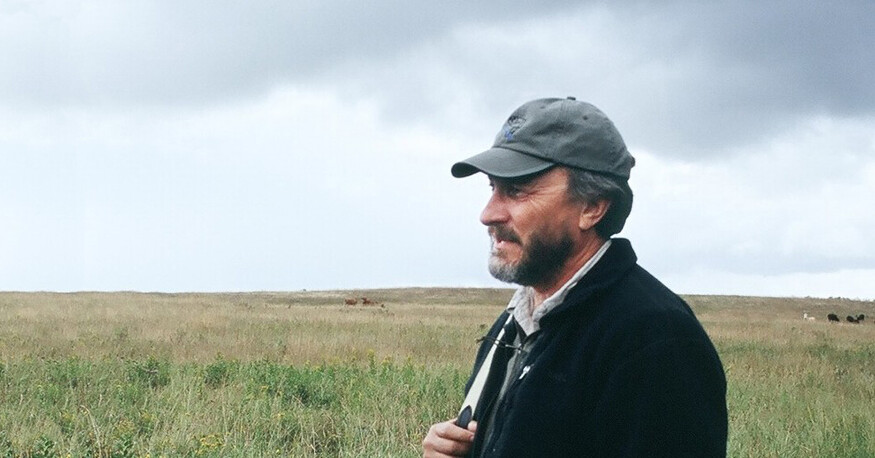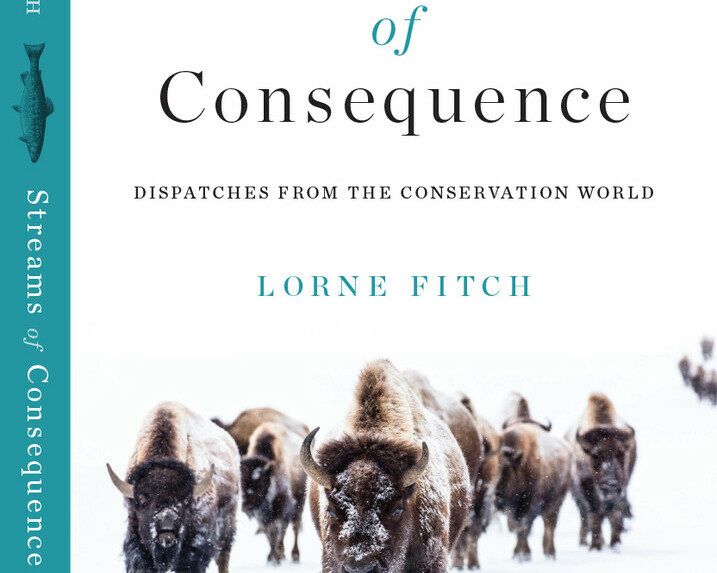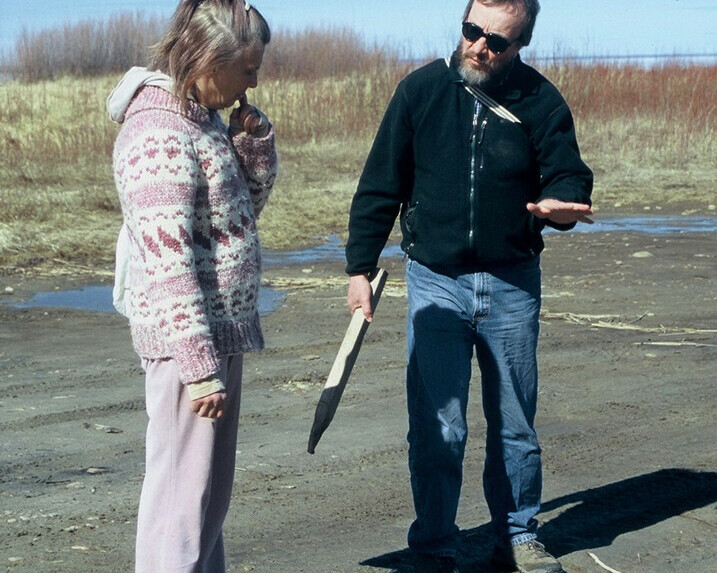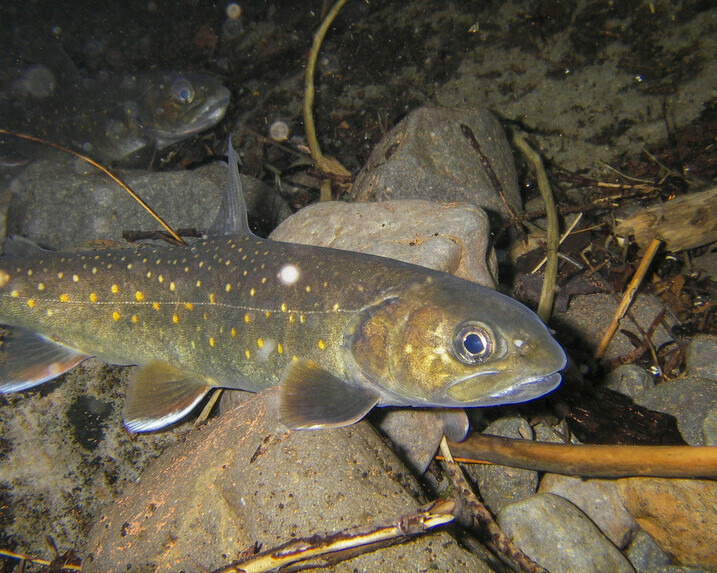
With a focus on biodiversity this month, we sat down with Lorne Fitch to discuss his new book. Streams of Consequence: Dispatches from the Conservation World, is Fitch’s collection of stories and essays based on a fifty-year career as a fish and wildlife biologist. His style is reminiscent of earlier conservation writers such as Wallace Stegner and Aldo Leopold, with traces of Edward Abbey’s piercing honesty.
STORYTELLING: GETTING THE READER TO ‘COME WITH YOU’
Fitch’s stories and essays are equal part philosophical musings, accessible science (both descriptive and measurable), and cautionary tale – all served with a good dose of heart and humour to help the ‘medicine go down’.
When asked about the style of his book, Fitch explains that he has likely written over 100 scientific documents. Early in his career, however, he realized that while these documents provide fundamental information for issues around land use, the status of species and how to improve biodiversity, not many people read them. He adds that much of the “scientific jargon is almost impenetrable – even by those of us who think that we understand the language.”
While doing public outreach as a biologist, Fitch recognized that if he wanted to help explain how the natural world works, he would “have to revert back to an old convention called storytelling.” Once you’ve engaged and entertained the audience through story, you can then “deliver a few nuggets of ecological information.” He continues, “You’ve got to get people to come with you.”
He muses that physics may tell us “the world is composed of atoms, but what binds the world together are stories.”
LIMITS & LOSS
The book’s Prologue, “When the Strawberry Jam Boom Went Bust” sets the stage for one of the broader themes explored in the book: limits and loss. Fitch hyperbolizes the loss of something mundane in his own life: his mother-in-law’s jam. His evocative prose laments how the jam recession hit due to his mother-in-law’s advancing age and waning energy.
I bear her no malice for the cessation of the picking, cleaning, slicing, cooking and canning. There are better things to do on the hottest day of the year. But this was the underpinning, the substance that signalled the soundness of my breakfast world. The glue that held breakfast together is missing. . . My world, if not collapsed is echoing with the sound of a spoon in an empty jar.
Fitch rues how he once treated their “cornucopia of jam” with “sarcasm, derision and thoughtlessness”, believing that the “jammy care packages” from Ontario would never end. Fitch wonders at how he failed to appreciate his MIL’s labours, wasn’t more thoughtful about how to make the supply last longer, and concludes that “when in surplus one never thinks of shortage”. As the Prologue closes, he solemnly vows how he would cherish and steward the jam as a valuable resource if he could do it again. The lighthearted absurdity of Fitch’s jam-less longing evokes a familiar feeling for what one often taken for granted – until it’s taken away. This allegory sets the stage for the losses and changes Fitch has witnessed in the natural world over his career – and the hopeful signs of resilience encountered along the way.
PROTECTING SPECIES: MORE THAN ICONS OR INDIVIDUALS
The book’s introduction speaks about the power of biology being “the connections and relationships we build with the natural world and its occupants.” Fitch challenges some of our ideas around these relationships in his essay “The Saga of Ed the Duck and Others”.
Fitch describes the lengths to which people went to help a mallard duck named Ed (seen donning a plastic six-pack collar) and Gus the rainbow trout (found in a puddle during a construction project). Fitch notes in our interview that the issue with wildlife and bird watching, photography, and nature shows is that they generally focus on the individual. “And the individual, as I write, is nothing more than a comma in the sentence. And the sentence is the landscape, the habitat that creates the opportunity for those charismatic and non-charismatic animals to survive and thrive.”
The essay encourages the reader to consider the broader interconnection of a species to a community and ecosystem. “It’s the herd, the flock, the school and the grove that matters,” Fitch writes. He emphasizes that in all the media coverage of these two individual news stories, there was no mention of “the pervasive loss of prairie wetlands” and waterfowl habitat or that many river reaches can no longer sustain trout because of land use impacts. He writes, “Unless we connect that lion, wolf or deer to place, the place may not remain to sustain the individual.” The essay entreats the reader to consider “the needs of the whole wildlife community (and landscape integrity) rather than those of one individual, alone.”
RIPARIAN CONNECTIONS: THE ORIGINS OF COWS and FISH
The first two decades of Fitch’s career were spent “trudging up and down streams in the eastern slopes, doing inventories of physical habitat, doing water sample analysis, analyzing benthic invertebrates, catching fish to weigh and measure and trying to figure out their abundance.” After witnessing the condition of many of these streams and their riparian areas, he found himself asking, “How can we turn this around?”
In the late 1980s, Fitch became associated with a Range Management Specialist with Public Lands named Barry Adams. Adams was teaching a 3-day Stockman’s course, created to give ranchers a better understanding of the landscape that they work on and to help them develop a more sustainable grazing initiative. Adams asked Fitch to do a talk about livestock impacts for fish and wildlife. Fitch says it was an opportunity for him “to relearn how to tell stories and to tell them to a rural audience” and get past the barrier of being a government employee and a non-local.
COLLABORATING WITH PRODUCERS & LANDOWNERS
Fitch soon recognized these landowner interactions were about building relationships and trust with producers, where both sides could learn from one another. After finishing his slide show with stream banks that had been devastated from grazing, the landowners began to ask what they could do differently. Using Adam’s principles of range management, Fitch and Adams developed the principles of riparian grazing management.
This work all happened “off the sides of our desks” – with little time and no budget to do it. As Adams and Fitch recognized their personal limits, they contacted a US federal and state biologist named Bill Platts, who was working on riparian and grazing management strategies to benefit trout. Platts provided them with insights and strategies, but they also “went out and we found ranchers who were already ahead of the game.” Fitch recalls how he and Adams “told their stories so it wasn’t us the ‘experts’.”
Telling these compelling stewardship stories was the genesis of the “Alberta Riparian Habitat Management Society”, known informally as Cows and Fish. The organization is thriving, with a staff of 14 three decades later. Its grassroots approach means they run all their material by producers to ensure the language is relatable and they are considered one of Alberta’s top authorities in riparian health monitoring and practical solutions to riparian management.
Partnering with landowners was one of the most invaluable and hopeful parts of Fitch’s career. He writes about one family named the Balogs who moved beyond appreciating wildlife on their land to taking action on behalf of the threatened northern leopard frog. After talking to some biologists about the results of an amphibian inventory on their land, it was clear to this multi-generation farm family that they needed to reassess how they were managing their livestock. By intentionally managing cattle “with the needs of the frogs in mind”, the Balogs exemplify Aldo Leopold’s land ethic, a concept woven throughout Fitch’s book. Fitch points out that this “ethic of care” is not magic, but ordinary people making decisions for the benefit of the whole ecosystem so that threatened species can thrive. In an earlier essay, he astutely observes, “Wildlife embody the landscape in which they survive.”
NATIVE TROUT: THE DANGERS OF SEDIMENT OVERLOAD
One of Fitch’s other passions is the state of native species, particularly native trout. Cows and Fish undertook a survey to gauge if professionals and people connected with the fishing industry understand the problem of erosion for trout. They were surprised to learn that 75-80% of interviewees erroneously believed that sediment was a good thing (even though fisheries biologists had been saying the opposite for many decades).
While a certain level of sediment is within the normal range, land use and human footprint activities have poured sediment “into the water orders of magnitude higher than the range of natural variation,” according to Fitch. He explains how excess sediment can cause problems with spawning and cover or clog the substrate needed for trout “to build a redd and deposit their eggs”. This is compounded by the bedrock geology of Alberta being primarily limestone and this sediment is like a “primordial cement” which can glue substate materials together. This glued substrate can prevents the natural spring flushing of sediment and cause “streams to erode laterally because that’s the path of least resistance.” To prevent the cascade of negative impacts for trout, riparian buffers are one critical piece of arresting and capturing that sediment. To learn more about helping native trout, see Cows and Fish’s Alberta Native Trout Collaborative.
Fitch is amazed at how native trout species go back about 4,000 generations that have weathered all kinds of floods, drought, and “a range of natural variability has been melded into their genetic material.” He contrasts this with the possible 25 generations of hatchery rainbow trout and asks us to consider this and “be in awe” of these species who have sustained a deep resilience in their native habitat through “turbulent times”.
BIODIVERSITY: LIVING WITHIN LIMITS
Fitch strives to make incremental shifts to the reader’s paradigm and draws the reader into his meanderings through a landscape with limits and limited resources. When speaking of how people may view protection of endangered species as infringing on their “privileges and opportunities”, Fitch proposes that while mitigation can be helpful in some cases, it “is often used to divert our attention from something more fundamental. Our real task it to learn to live within the limits of the land”. Fitch believes part of the problem is “our inability to understand shifting benchmarks”, or the fact that the world is continuing to change, particularly because of human development and impacts.
CLIMATE CHANGE: LOOKING TO THE FUTURE
If there’s one word of advice Fitch would offer the NSWA, it’s to look to the state of the Oldman, Bow River, and South Saskatchewan watersheds in terms of water levels and drought. He points to how both independent and academic hydrologists have been saying that river flows are declining. “They’ve been declining for about 100 years and the drought of the last two years in southern Alberta should be teaching us that that the world is changing.” He refers to the Colorado system where the “the massive reservoirs that were built on the Colorado system are puddles now. So, it’s an example that you can’t outrun climate change by building more reservoirs. You have to start adapting to the reality of the world as it is and as it will be, not as it was.”
Fitch is a testament to his own principles of what makes conservation work: continuity and persistence. When asked about his influences, Fitch is happy to talk about his role model – wildlife ecologist and conservationist, Aldo Leopold. While attending university in 1971, Fitch took out a copy of Leopold’s classic, A Sand County Almanac, and never returned it. Fitch says that Leopold’s book shaped much of how he came to understand his place and role as a biologist and gratefully acknowledges how Leopold gave him “an education in ecological thinking, a philosophical touchstone”. Having highlighted just about every page in the book, it’s taught him to “convey complex messages in a in a way that are easily identifiable and understandable.” Like Leopold, Fitch continues to inspire those around him to develop a land ethic and live more lightly on this earth we call home.
LEARN MORE:
Buy Fitch’s Streams of Consequence book at Rocky Mountain Books or Amazon
To learn about how to manage livestock with wildlife and water in mind, see Cows and Fish
To see what landowners are doing to support biodiversity in our watershed, go to the Riparian Web Portal
Learn how to care for riparian areas



